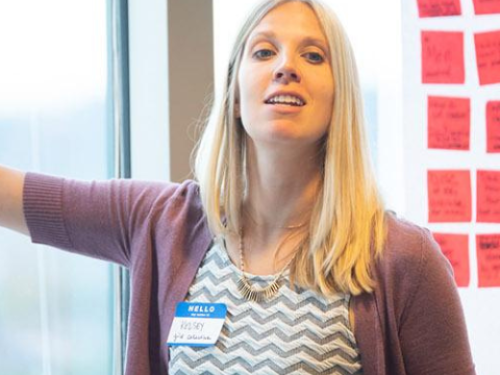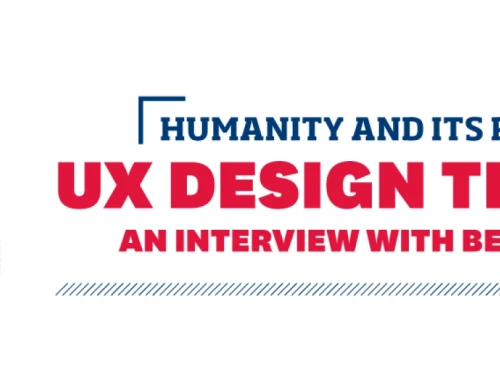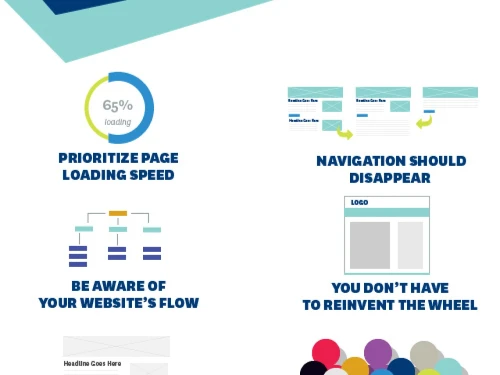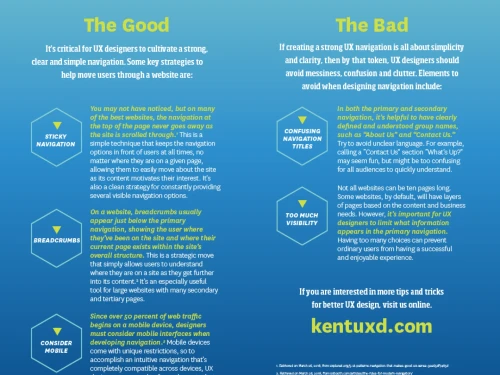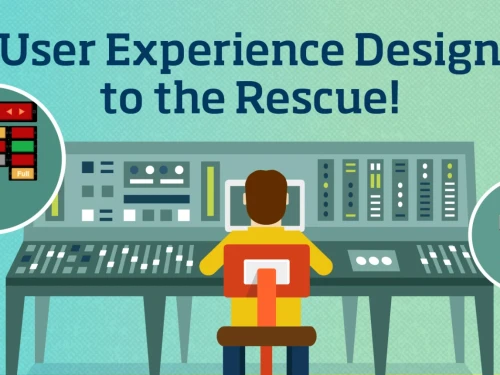User Experience & Design
Kent State University’s 100% online Master of Science in User Experience (UX) equips students with cutting-edge skills in a rapidly growing field. The program emphasizes integrating UX principles with real-world applications, helping students thrive in roles that enhance digital and physical user experiences. With career-focused courses and a strong alumni network, graduates secure impactful roles, including positions at companies like Disney, and are poised to excel in this dynamic industry.
Related Blog Posts
Felesia McDonald, ’14 is an adjunct instructor in the iSchool, teaching courses in the 100% Online Master of Science in User Experience. McDonald is also the Sr Manager UX Design at Optum, a branch of UnitedHealth Group.
As one of the newest faculty members in the iSchool, Professor Dong Whi Yoo is encouraging students to see the potential of interdisciplinary research.
Kelsey Pytlik serves as an adjunct professor for the Kent State University School of Information, teaching courses in UX, UX principles and concepts, principles of interaction, and more.
UX designer jobs are part of the fastest-growing career fields in the United States for reasons that should come as little surprise. Quality user experience design (UXD) can lead to an increase in site conversions of up to 400 percent,1 which can greatly impact brand loyalty and sales, and most web users say they won’t recommend a business with a poor mobile experience.
When people interact with computers they do so through interfaces. These interfaces are designed by humans, and in the optimal situation, they are user-friendly and easy to navigate. As more of us use computers and machines daily for everything from work to shopping and social interactions, user experience (UX) is more critical than ever before.
Get to know Kent State University even more through our vast array of blogs.
Drew Shipka works for the Office of Continuing and Distance Education and has helped improve online classes at Kent State University for over a decade. He leads a team of instructional designers whose primary responsibilities are developing fully online graduate programs. He earned master’s degrees in Philosophy from the University of Western Ontario, and Library and Information Science, and Information Architecture Knowledge Management from Kent State University.
User experience design (UXD) is a strategic undertaking. At minimum, it requires a fundamental understanding of digital sociology and the principles of storytelling and website design. While UX designers are often exceptionally intelligent people, there are always ways in which they can improve their overall output.
Kent State User Experience Design (UXD) Instructor Kelsey Pytlik has an undergraduate degree from Miami University of Ohio and a master’s degree in User Experience Design from Kent State University. After her early career with creative agencies and e-commerce retailers, she became the sole UX designer for luxury furniture retailer Frontgate. She is now the CEO of Gild Collective, which is dedicated to empowering women through inclusion and leadership.
If you’re wondering how to become a UX designer after years working in another field, Kent State University alum Brian Parsons, MS ’18, has one piece of advice: “Take on any roles you can with a UX-related title in them, even if it’s volunteering.”
Kent State online Master of Science in User Experience Design (UXD) student Kendra Jobes, MS ’19 candidate, has always wanted her work to make an impact on people. When her undergraduate degree in design led to an initial user experience job after college, she quickly learned that she enjoyed developing and using the artistic and technical skill set required for a UX role.
With a projected 10-year job growth rate of over 20 percent,1 the field of user experience (UX) design is exploding right now, and a graduate-level UX degree can help you get into the fast lane of this ever-expanding career track. If you’re forward thinking, curious about UX design trends and someone who thrives in a fast-paced and dynamic environment, you just might have what it takes to be a successful UX designer—at least according to Ben Woods, a UXD professional with nearly two decades of experience and a faculty member at Kent State University.
Good user experience (UX) is good business. The average American internet user spends nearly 24 hours per week on the internet, and best practices in UX design have become crucial not only to success online, but also in the physical world, where online brand and service experiences carry over into other real-time interactions.1 But since the internet is where we largely work, study, socialize and shop today, implementing proven UX design principles can make the difference between successfully engaging users and losing them to competing sites and services.
Nobody likes a 404 page. It’s never the page you were trying to find, and it’s usually not your fault that you ended up there. Standard error messages can be inscrutable, and the typically austere 404 page itself can disconnect the user from the overall site experience, which can sour them to your site and even your brand. So how do you create a 404 page that is dynamic, that easily redirects the user back to the content they want and that’s even a little bit fun?
When a website is excellently designed, we tend not to pay attention to the reasons why it’s so great—we simply enjoy it. On the other hand, if a website is difficult to use or frustrating, we’re more likely to take note of exactly what is making our experience so bad. This phenomenon has a name: It’s called the negativity bias, and simply put, it’s the sociological explanation for why we’re more likely to notice a negative experience than a positive one.1 It turns out that negative experiences require more thought for us to process, as they take us away from the experience we expected and demand a shift or adjustment in our thinking and action.2 Unsurprisingly, these moments are more likely to stick with us than a moment that went perfectly according to plan.
On Saturday, January 13, 2018, a terrifying message populated the screens of over a million smartphones in Honolulu, Hawaii. It read: “BALLISTIC MISSILE THREAT INBOUND TO HAWAII. SEEK IMMEDIATE SHELTER. THIS IS NOT A DRILL.” As the world now knows, this turned out to be a false alarm. An investigation into the incident found that the message was sent by mistake when a state employee hit the wrong button during an internal drill.1
The experience one has when interacting with technology is fundamentally human. Our digital lives—from navigating a tablet to paying at a bank kiosk—have become so ubiquitous, interwoven and essential to the way we interact with the world and others, that it’s almost hard to remember what life was like before these technologies existed. Simply put, we depend on technology to move our lives forward. It plays a critical role in our individual storylines as well as our collective narrative.
Q&A with user experience design student, Jessica K (Kent State Online, ’17)
Q&A with user experience design student, Jessica K (Kent State Online, ’17)
Q&A with user experience design student, Jessica K (Kent State Online, ’17)
When I started Kent State University’s UX master’s program, I was excited about the opportunity to advance my education but apprehensive, because I had no UX experience prior to my enrollment. My expectations were to gain a general understanding of UX, develop a foundation for UX practices and be able to build a portfolio that I could use professionally in search for a career in UX.
When I was considering the Kent State program, I read some UX message boards where posters warned that having a master’s degree in UX would somehow make me less marketable, but now, having finished, the opposite has been true.



